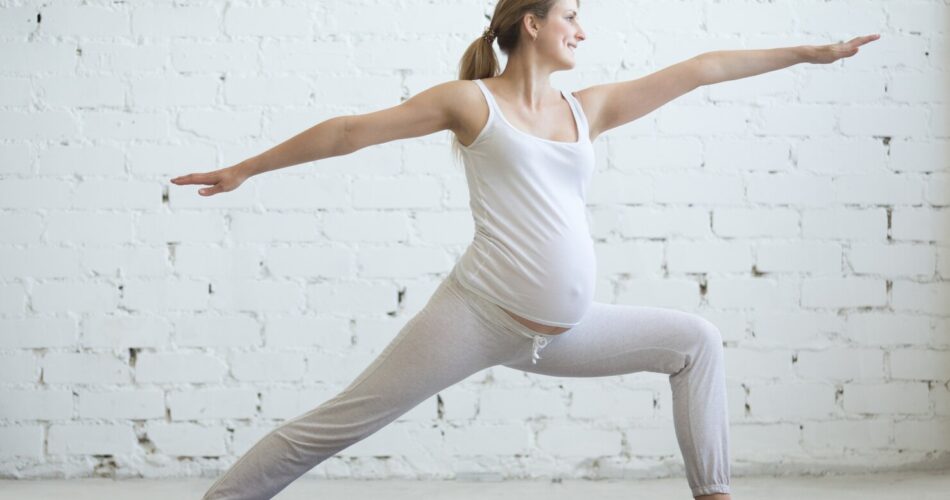Standing Yoga Poses in Complexes for Pregnant Women
Often, the first beginner exercises are standing yoga poses. Sometimes at the beginning of pregnancy, standing exercises are recommended to be excluded from training complexes and revisited in the second trimester. But if there are no medical contraindications for physical activity, practicing simple or well-mastered poses is absolutely safe. The correct execution of standing poses is covered in detail in the website’s video lessons.
If your level of preparation is still low, standing asanas can be performed with support or against the wall. It is important to pay attention to the sequence of poses in the chosen complex: for example, to prevent varicose veins, it is important to perform inverted poses after standing asanas.
Before performing complexes for pregnant women with standing asanas, as with all other workouts, there should be a warm-up. In addition, do not think that a yoga mat is unnecessary for standing poses: it will prevent slipping and protect from injury when adjusting asanas of medium and high levels of difficulty.
Standing Yoga Poses of Low Complexity
For beginner yogis, Tadasana and Utthita Trikonasana are suitable standing asanas to master.
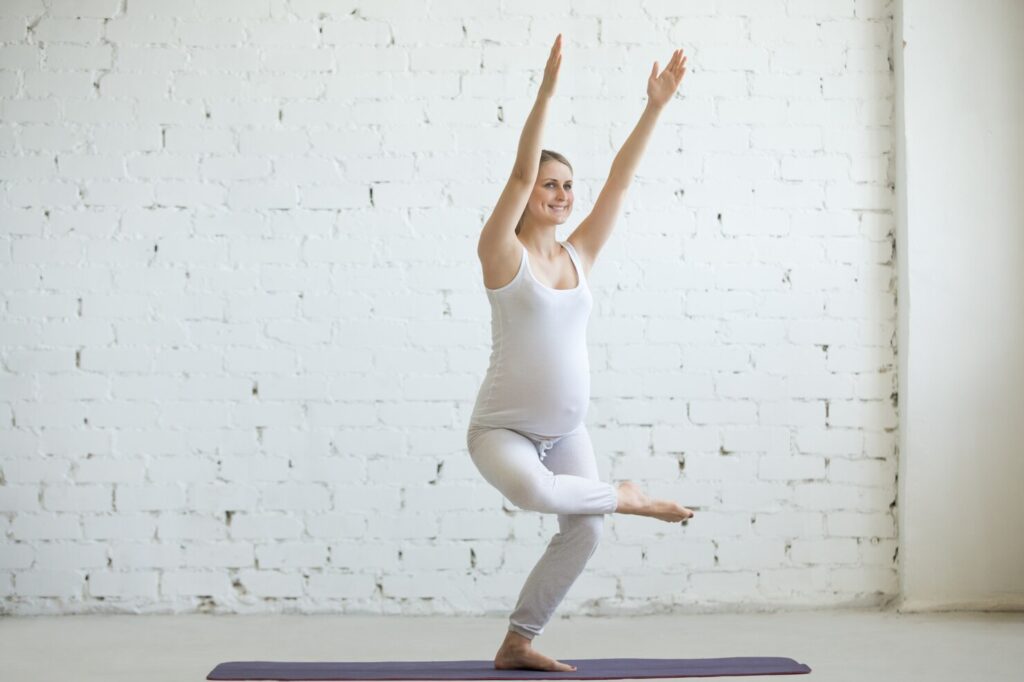
Tadasana is considered the foundation of many standing asanas, and it can also be used for relaxation between performing more complex exercises. The key to assuming the Mountain Pose is a stable position, as the main goal of Tadasana is to achieve balance in the body. In Tadasana, the feet are placed parallel and brought together, the arms are extended along the torso, the crown of the head stretches upwards, and the spine is straightened. In the second half of pregnancy, the legs in Tadasana can be spread apart: the belly should feel comfortable. The asana forms a beautiful posture and improves circulation.
To enter Utthita Trikonasana, spread your legs about a meter apart and raise your arms to shoulder level. Then, turn your feet (the right slightly inward, and the left 90 degrees outward), tilt your torso to the left and touch your ankle with your hand. The arms should form a straight line. Hold the pose for about 30 seconds, then repeat on the right side. This asana stretches the groin, strengthens the legs, and relieves constipation.
Standing Asanas: Intermediate Level
Pregnant women with some experience in Hatha Yoga are recommended to include Vrikshasana and Prasarita Padottanasana in their training routine.
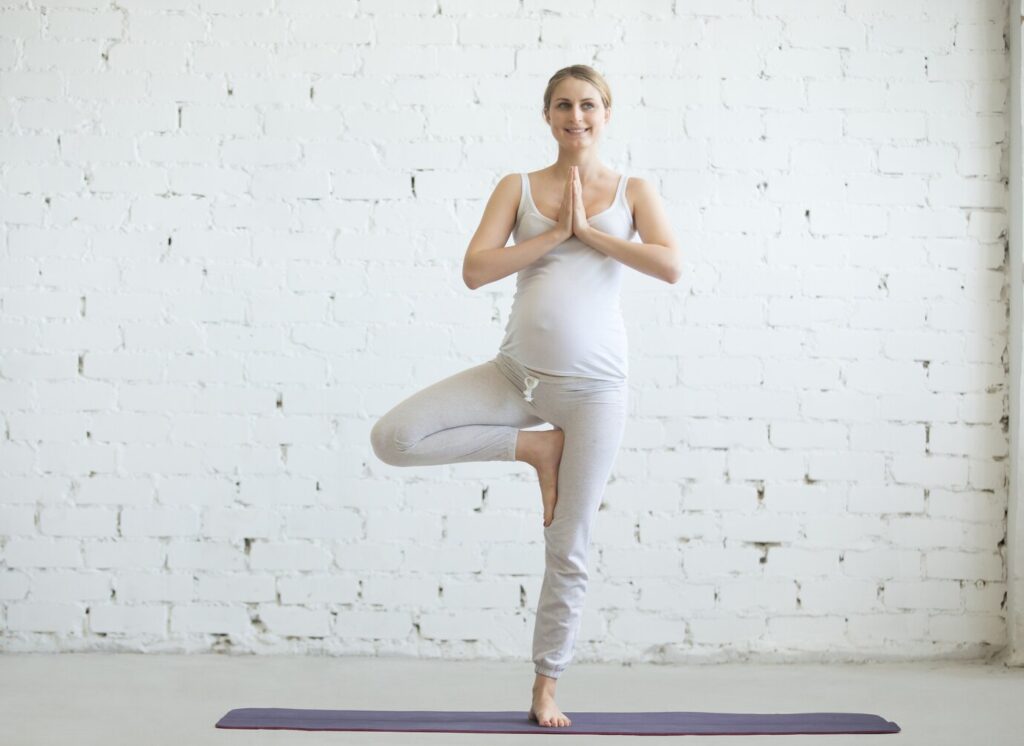
Vrikshasana (Tree Pose) is recommended for relieving back pain, treating flat feet, and normalizing biological rhythms. To set up the pose, stand in Tadasana, lift the right foot and press it against the inner part of the left leg. Depending on physical preparedness, the foot is placed above or below the knee, but it’s strictly contraindicated to press the foot against the knee. The foot should seem to press into the leg, which in turn creates counter pressure. The hands can be in a namaste or, in a more challenging variation, raised with palms joined above the head. After a few breath cycles, repeat the exercise standing on the right leg.
Prasarita Padottanasana opens up the groin area, preparing the mother’s body for childbirth. The pose involves bending with legs wide apart. Variations of the pose depend on the position of the hands. They can rest on the floor, be interlocked in a hand or forearm lock, or folded in namaste behind the back. Squats, rolls, and twists can also be performed from the Prasarita Padottanasana position.
High-Complexity Standing Asanas
Advanced practices include yoga routines with standing asanas that require serious physical preparation, such as Garudasana and Natarajasana.
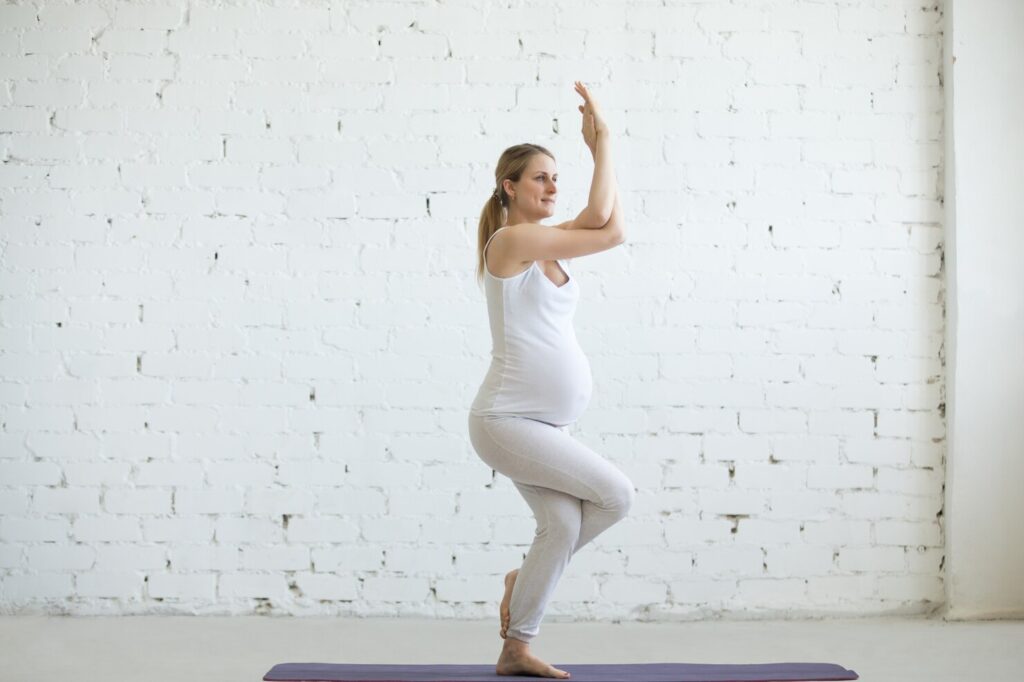
The Eagle Pose, or Garudasana, has a therapeutic effect on varicose veins, improves blood circulation, strengthens the leg muscles, works on the joints, hips, and shoulders. To enter Garudasana from the Mountain pose, bend your knees and entwine your left leg around the right one. Then, intertwine your arms: usually, they are intertwined in the opposite direction. It is important to ensure that the back remains straight while adjusting the asana. The pose is held for several breathing cycles, and then the exercise is repeated on the other side.
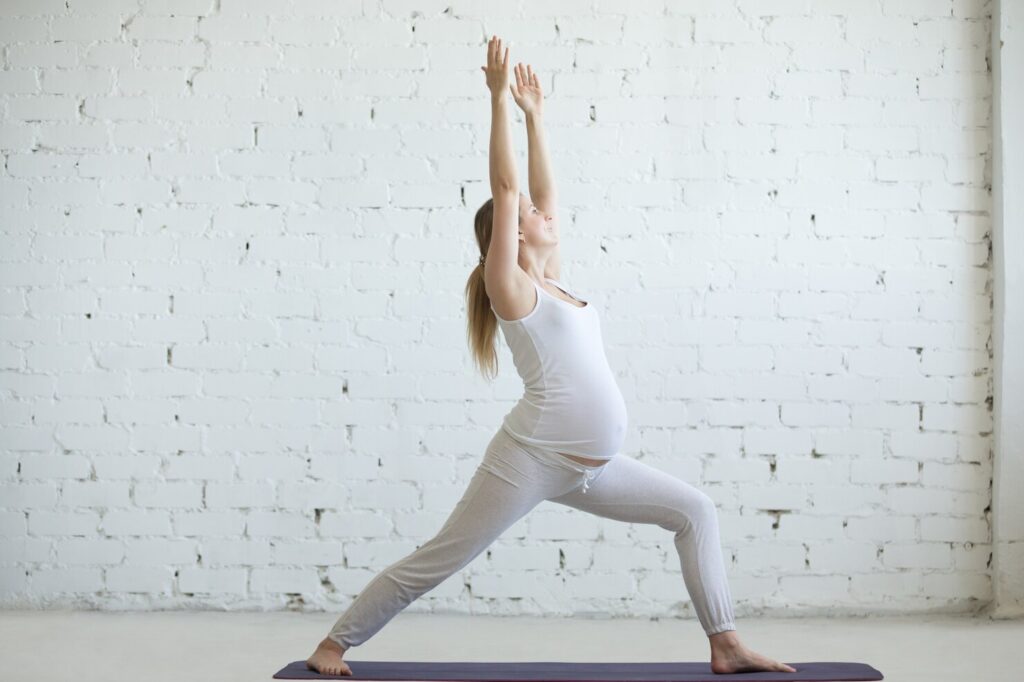
Natarajasana, or the King Dancer’s Pose, has a calming effect on the nervous system, enhances blood circulation in the groin area, strengthens the back, and opens the chest. From the starting position (Tadasana), extend the left arm forward while bending the right leg at the knee, moving it back and up. Then, reach the right arm back to grab the big toe and continue lifting the foot until the thigh is parallel to the floor. After that, rotate the shoulder outward and pull the elbow upward. Hold the balance in the asana for about 15-30 seconds, then repeat the same steps standing on the right leg.



Download the app and get 7 days free use
 eng
eng rus
rus deu
deu spa
spa fra
fra ita
ita por
por srp
srp tur
tur ukr
ukr por
por bos
bos